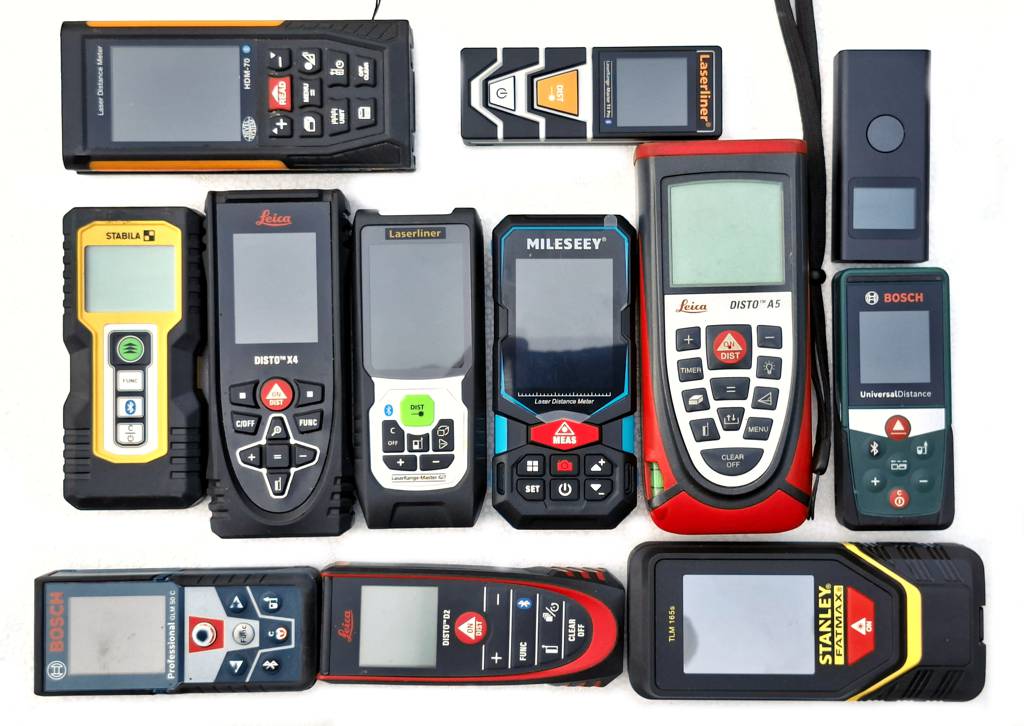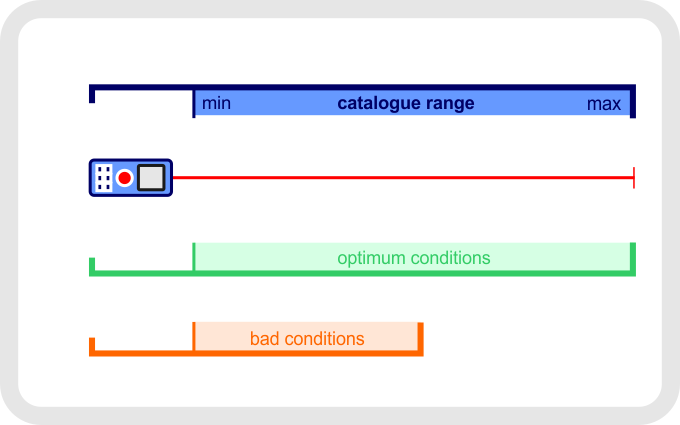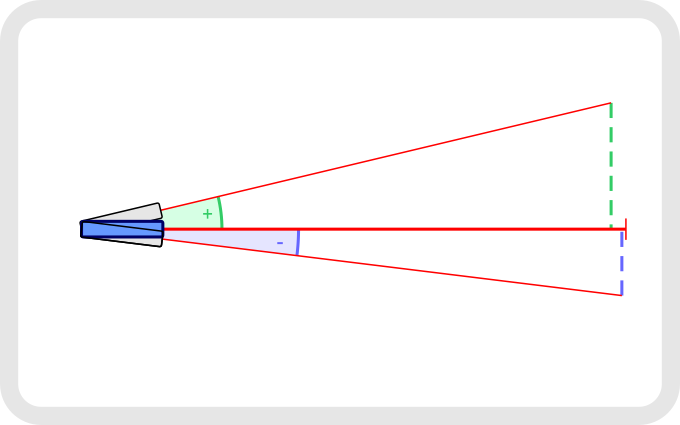7 Things to Consider Before Choosing a Laser Distance Meter

There are hundreds of laser distance meters currently on the market. How to choose the best one? Which parameters are important and which ones are just a marketing noise? Below is a guide based on a real human experience from the construction sites and survey jobs.
1. Distance measurement range
Maximum distance is the key marketing parameter for laser measures, often shown as a number in model name and correlated with the price. The longer the better, but the question is how much do you really need? In average use, it is rare to take single measurements at the distances longer than 20 to 30 m. The 50 m measurement is already very long and 100 m almost never happens. Measurements at 100 m and above are technically difficult and require the use of tripod and viewfinder.

BUT. The maximum distance given in the device specs is for the optimum measurement conditions. For bad conditions like weakly reflecting surface or high ambient light the maximum range will drop, often significantly. Also the measurement time tends to get longer in bad conditions and at longer distances, wich is annoying. To be on a safe side, it is reasonable to choose the device with 2 times longer range than what you expect to deal with.
When looking at catalogue distance ranges, use following key values as hints (with some flexibility, of course):
- 25 m - useless except for very basic tasks,
- 50 m - good for most standard jobs,
- 100 m - suitable for serious survey,
- 200 m - unlikely to be ever needed.
Don't forget about minimum mesurement distance. Technically for contemporary devices the lowest distance is around 5-8 cm from the front of the device housing. The point is that not all devices allow for easy change of the reference surface from the back to the front.
The deviation of the measured distance ranges from ±1 mm to ±3 mm in various devices. The deviation will increase in bad measurement conditions and additionally deteriorate as the measured distance increases. Obviously, the lower measurement error the better. You should remeber however that other factors contribute a lot to the measurement error, especially the proper alignment of the instrument to the measured edges and beam levelling.
For some uses the ISO 16331-1 certificate may be needed. It ensures that the range and accuracy of the instrument is specified for controlled measurement conditions and the parameters are comparable between various devices. Usually ISO-certified devices are more expensive than others.
2. Inclination angle sensor

Additionally to the distance measurement, some devices can record an angle between a laser beam and horizontal plane (inclination angle). Often overlooked, this feature can be very useful and should be considered as an important factor when choosing a device. What would you need it for?
- an angle record itself - often you just need to measure an angle, like a roof slope for instance;
- indirect measurements - the inclination angle gives your device more possibilities for indirect distances like height;
- error correction - if the device is not levelled during measurement, the angle can help to correct the distance deviation.
How the inclination angle can be useful for you depends on the instrument internal functions, but also on the capabilities of the external software if you use Bluetooth data transfer.
3. Calculation functions
Even very basic models do not only measure a distance, but offer some extra calculations that are supposed to be helping in some use cases. Generally you are prompted to take a sequence of distance measurements according to some scenario and the instrument calculates a new value for you. Usually they fall into following categories:
- basic math: addition and substraction of distances;
- continuous measurement, determine min / max values;
- area / volume calculation;
- indirect measurements using Pythagoras formula;
- indirect measurements using inclination angle;
- P2P measurements using horizontal and vertical angles.
Please note that while most of these functions are implemented in a device's software, the last two require additional sensors and therefore are usually found in a more advanced models. P2P measurements sometimes need external adapters to read the horizontal angle.
Some users like the built-in functions very much and use them extensively, the others prefer to do calculations by themselves and don't use the built-in functions at all.
4. Outdoor beam visibility
When measuring outside on sunny days the red laser dot will have tendency to disappear after a few meters, depending on a target colour and sunlight intensity. The measurement will become difficult and in many cases not possible at all. The first idea would be to increase a laser power, but it is not possible because the meters use Class 2 lasers for safety reasons and usually they already have a maximum allowed power of 1 mW. Two solutions are used:
- green laser,
- digital viewfinder.
At the same power the green laser beam is brighter than the red one, because the human eye is more sensitive to this colour. In practice it works, i.e. the beam is considerably brighter, but don’t expect miracles - at full sun the green dot will also disappear at some distance.

Digital viewfinder is a built-in camera with zoom of 2x to 10x that shows the target image on a display. One should pay attention if the display itself is bright enough to see the image in a sun and whether the camera exposure and focus automation works efficiently. For long distances of about 50 m the viewfinder is helpful regardless of light conditions and for very long shots like 100 m it is indespensable.
5. Housing endurance and shape
For some uses the endurance and tightness of the housing is not just an extra feature. If you plan to use the meter during work on the construction site, go for the IP 65 certified extra durable unit with some drop safety guarantee. Rubber coating will not harm. Delicate devices with large displays or touchscreens are better suited for survey work in calm, controlled conditions.
Shape, size and weight is a matter of personal preferences but keep in mind that for this kind of tool fancy design with curved lines is not necessarily the best when it comes to the visually align the instrument for the measurement. Actually, an ordinary rectangular box works best here. Especially a foot, as a part that is used as a measurement reference, should be large and well adhere to the flat surfaces, without any wobbling.
Small sized and light device may be a good choice when you measure occasionally but need to keep the device all the time in the pocket. On the other hand some people prefer larger instruments as they fit better in the hand.
Whatever your preference is, it is good idea to visit your local shop and check several units on the ergonomy aspects. Is the device well fitting in your hand? Are you comfortable with the measuring in various positions? Is measurement button large enough and perceptible? Do you like the display?
6. Brand
There are so many manufacturers offering laser measures that you can apply whatever strategy to select the brand: take most reputable one, the cheapest, best quality to price ratio, check the company profile or ignore the brand at all. Below is the list of some popular manufacturers.
- Bosch
- CEM
- DeWalt
- Einhell
- Erbauer
- Fluke
- geo-Fennel
- Hecht
- Hilti
- JCB
- Laserliner
- Leica
- Magnusson
- Makita
- Metabo
- Mileseey
- NEO tools
- Nivel System
- Parkside
- Prexiso
- Proline
- Ryobi
- Skil
- Sndway
- Sola
- Stabila
- Stanley
- Uni-T
- Vorel
- Würth
- Xiaomi
- Yato
But if you have your favourite brand and they produce a device that fits your needs - go for it, make yourself happy.
7. Bluetooth
When measuring a lot, sooner or later you will find out that the weak point of the whole process is to write down the measurements. For this you will need some kind of sketchbook that dangles on your neck, a pencil that is always lost in one of the pockets and a lot of care not to make a mistake when reading the distance on the display and writing it down on a paper. The solution is Bluetooth data transfer from laser measure to your mobile, that you most probably have with you anyway. Even id you don't feel like you need it now, it is reasonable to have this possibility in a future, especially if measured survey is a part of a larger workflow.
There are plenty of Bluetooth laser distance meters to choose from.
On the second side of data transfer, a mobile device, there will be an application for data collection. The manufacturers of Bluetooth laser measures offer the apps for their devices. There are also universal apps from external developers that are compatible with various measures. One of them is Lasernote - measuring app for android. It allows for drawing site plans, annotating images with dimension lines and exporting site plans to CAD for further processing. It can be downloaded from Play Store.

To summarize, there are plenty of laser distance meters on the market and the choice is not easy. Understanding your needs is the key. In this guide we explained you most important measuring aspects but your own preference matters a lot too. What kind of batteries do you prefer? How is your sight - maybe you need a high contrast display with big numbers? Would you like to attach a hand strap? Maybe you need two devices for different uses? Buy a second hand unit? Or an older model?
